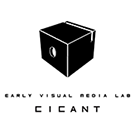Quintal dos Sons: Uma experiência a partir de sons do Vale do Jequitinhonha [PT]
Rosimária Rocha
A presente investigação, consiste numa reflexão sobre a instalação sonora imersiva “Quintal dos Sons”. Onde, abordamos o processo artístico envolvido na sua criação e os conceitos e noções referentes ao artefacto computacional e os médias envolvidos; aliando, desta forma, a prática artística e a investigação teórica. A instalação tem como objetivo principal refletir sobre os sons na contemporaneidade. A primeira versão buscou levar o(s) fruidor(es) a ficar(em) sozinho(s) numa sala escura, visualizarem um vídeo e interagirem com os sons que eram reflexos do conceito Soundscapes (paisagens sonoras) de sons da natureza e de outros produzidos pelo Ser Humano; esses sons apenas eram executados com a aproximação do(s) fruidor(es) (incorporando os sons e espaço nas suas próprias vivências sensoriais, de forma imersiva).
Na fase atual, foi incorporada a metáfora do “Assum Preto” e foram acrescentados à sequência sonora da instalação sons característicos da cidade de Almenara, no Vale do Jequitinhonha-Minas Gerais. Na concepção da arte sonora, o conceito Soundscapes mistura sons naturais, processados e artificiais. São obras que (re) criam sensações de ambientes particulares e imersivos. Segundo Barros (2016: 860), elas relacionam-se diretamente com a arte da instalação e imersão, e em muitos casos, são construídas especialmente para o local em que acontecerá a intervenção. Muitas destas, fazem uso de tecnologias interativas, interfaces, computadores, sensores, dispositivos mecânicos, cinéticos e eletrônicos. A instalação é uma linguagem artística, que em seu bojo traz a questão da ampliação do conceito de arte e da contaminação de diversos meios como poética.
A instalação Quintal dos Sons pretende trazer para o fruidor, os extremos paradoxos da vida contemporânea, como a calmaria e o caos.







